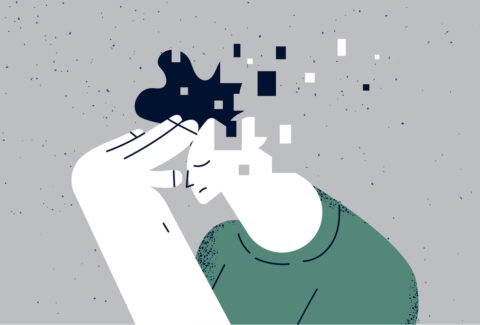The Cognitive Faculty Assignment Approach (CFAA) and Imagination-Focused Therapy (IFT)

The Cognitive Faculty Assignment Approach (CFAA) and Imagination-Focused Therapy (IFT)
We are a complex entity. As a whole body, or a whole organism, we are made up of 11 organ systems, which include our nervous system and our respiratory system, for example. Each of these 11 organ systems are made of organs, and we have approximately 78 organs in our body, 5 of which are vital, including, our brain. Each of our organs, in turn, are made of tissues, which are made of cells; and we have approximately 37.2 trillion cells in our body.[1]
That is a lot of cells, and each one of them has independent living functions. In fact, we all started as just one cell – a cell like one of these 37.2 trillion[2] and we have, since, been evolving. When looking at ourselves as a whole organism, superficially, we may not look so complex. Even when we look at ourselves from the perspective of our 11 organ systems, or our 78 organs, our apparent complexity pales in comparison to our true complexity, which is best appreciated at the level of our cellular organization. When we take a moment to wonder about how one single cell has divided itself, then multiplied, and then differentiated into hundreds of different groups of cells, and evolved into 78 different organs, 11 different organ systems, a whole unity of body, while functioning as both a whole group of 37.2 trillion of cells, together, and as one single cell, separately, we start to appreciate the complexity and the paradox of who we are as an organism. Such a moment may indeed generate a lot of questions, such as:
- How is all this possible?
- What makes all this possible?
- How does it all work?
- What’s the mechanism?
- What’s behind all this and what else does it do?
- Are we able to understand how this all works?
- Are we able to harness the ability of this system in other aspects of life?
Eric Kandel[3], the Nobel Prize Laureate, is a psychiatrist and a scientist. He earned the Nobel Prize for discovering the role synapses play in memory and learning[4]. Synapses are connections between cells in the brain, called, neurons.
When Kandel was a medical student, he expressed his quest to understand the mind, the brain, and consciousness. The advice he got from his wise mentors at that time, was for him to study the brain one cell at a time. For in the cell lies the answer to the above 7 questions. So, he studied the brain, one cell at a time, and the rest is history.
From Kandel’s work and the work of other scientists who studied the brain, one cell at a time, the following conclusions can be summarized:
- Our brain is the organ that serves as the command center[5] for the other 77 organs
- Our brain, as an organ, does all its work at the level of its cells, known as neurons
- Our brain serves as the command center for the other 77 organs through cell-to-cell communication
- As a command center, our brain is more of a site. It is the place where commands are being given, but the command itself is what we commonly call brain functions or cognitive functions
- Our brain functions or cognitive functions are what truly command each one of our 78 organs, our 11 organ systems, as well as the coordination of our 37.2 trillion cells
But you may ask, before we had a brain, where were these cognitive functions? The answer is, “at the level of the cell.” And that’s exactly what makes the cell the basic building blocks of all living things. Each one of our 37.2 trillion cells is organized into exactly what makes up our whole body or how our organism is organized. For example, the name given to the command center for the cell, or the cell’s brain, is the nucleus. The name given to the respiratory system for the cell is the mitochondria, while the name given to the digestive system for the cell are the lysosomes. These same functions that are present throughout the cells and allow the cells to evolve, continue to control every aspect of the mechanism at the level of tissue, organ, organ system, and at the level of the whole organism. And regardless of the level of complexity that the cellular organization may take, the mechanism of control, also known as homeostasis, also controlled by our cognitive functions, continues.
To illustrate:
When we go to sleep, a series of stages cycle every 90 minutes. During that time, there are automatic changes in our rate of respiration, in our heart rate, in our musculoskeletal system, our skin, and our digestive system. The moment we wake, there is also an automatic change, at the level of our brain and at the level of all these other organ systems to then automatically adapt to our being awake. As we go about our day, this precise mechanism of adjustment continues. For example, when we stand, or sit, or walk, or run. As we eat, or think, or write, or read. As we talk, or feel, the same mechanism is in place, commanding the rest of our body, at the level of cells.[6]
This mechanism takes care of our most vital functions. Regardless of who we are, what our title is, and what our level of education may be, breathing remains our most vital function.[7] Our blood circulation comes to a close second, then our digestive and excretory systems. Now, it is not all black and white. All our organ systems work interdependently. The point we are trying to make here is that these vital functions of our body, upon which we rely to go around the world, are all dependent upon an intrinsic mechanism represented in part by our cognitive functions.
An intelligent question then is: Why is it that we are not making use of this same mechanism, to control our affairs and the different areas of our life, the same way these cognitive faculties are controlling each aspect of our vital functions and other functions?
The answer is:
We don’t and we can. It has been done. Many continue to do it. We can learn how to do it through the Cognitive Faculty Assignment Approach (CFAA).
During our upcoming Imagination-Focused Therapy Certificate Course, you will have the opportunity to learn how to make the Cognitive Faculty Assignment Approach (CFAA) available to your clients. Would you like that for them? If so, click here to join this certificate course now.
[1] Farley, Alistair, Ella McLafferty, and Charles Hendry. “Cells, tissues, organs and systems.” Nursing Standard (through 2013) 26.52 (2012): 40.
[2] Magazine, Smithsonian. “There Are 37.2 Trillion Cells in Your Body.” Smithsonian.com, Smithsonian Institution, 24 Oct. 2013, https://www.smithsonianmag.com/smart-news/there-are-372-trillion-cells-in-your-body-4941473/.
[3] Dobbs, David. “Eric Kandel.” Scientific American Mind 18.5 (2007): 32-37.
[4] Kandel, Eric R. In search of memory: The emergence of a new science of mind. WW Norton & Company, 2007.
[5] Arnsten, Amy, C. Mazure, and Rajita Sinha. “Everyday stress can shut down the brain’s chief command center.” Scientific American 306.4 (2012): 48-53.
[6] Foster, Russell G., and Leon Kreitzman. “The rhythms of life: what your body clock means to you!.” Experimental physiology 99.4 (2014): 599-606.
[7] Jones, Norman L. The Ins and Outs of Breathing: how we learnt about the body’s most vital function. iUniverse, 2011.






